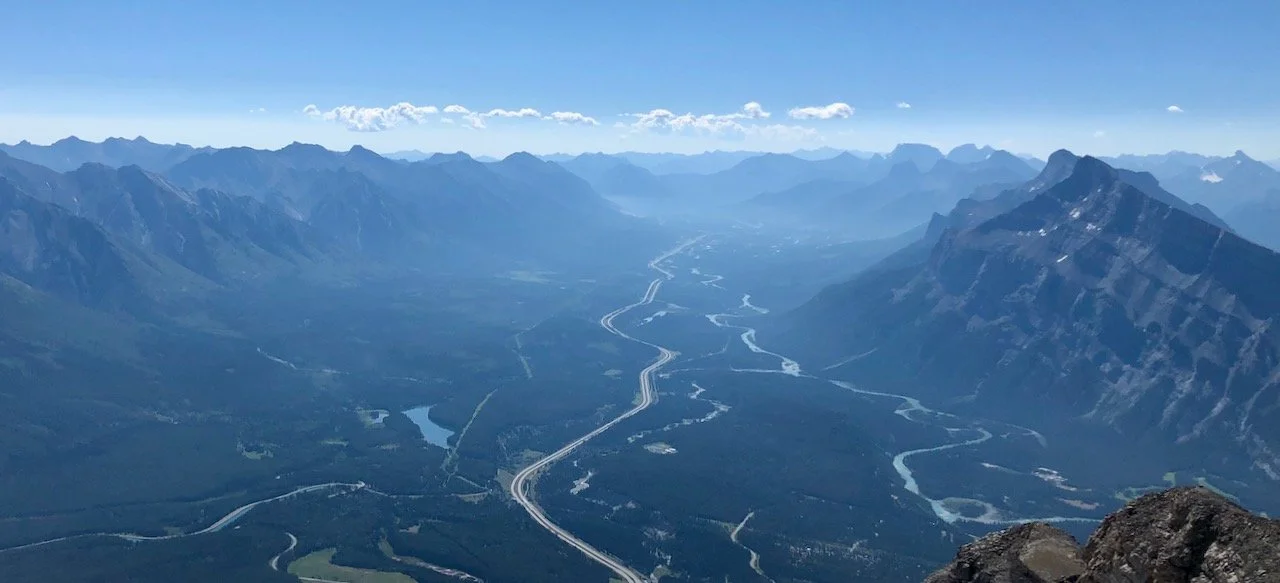Sharing the Bow Valley
By Robin Contos (May 10th 2023)
The Rocky Mountains are a hugely popular destination in Alberta. Residents and tourists alike converge in the Bow Valley to go hiking, skiing, mountain biking and to enjoy the scenery and terrain afforded by the mountains. This area, however, is not used by humans alone. The Bow Valley provides a wildlife corridor for elk, bears, wolves and other animals.
A wildlife corridor is a secure area of land which animals can use to travel from one habitat patch to another. In the absence of wildlife corridors, it is likely that animals would not be able to travel through the valley.
“Without these wildlife corridors it would be much more energetically costly to travel throughout the landscape, which would mean that they would need to get more food and eat more, and of course that cascades and has effects on survival,” said Peter Thompson, PhD, a researcher in the department of Biological Sciences at the University of Alberta.
“Wildlife corridors allow animals to move efficiently and focus more on foraging and survival.”
Wildlife corridors are not only important because they allow the movement of these animals, but they also ensure gene distribution and enhance biodiversity.
It is imperative to restrict human use in and around wildlife corridors in the Bow Valley, as it is the busiest landscape in the world still used by grizzly bears.
Due to the density of people and wildlife existing in the same small area, conflicts have arisen as humans disrupt wildlife with their numerous recreational activities. Some scientists believe that the Bow Valley already acts as a selective filter, that more wary wildlife refuse to use.
“Wolves typically are the most adverse to human presence and so in many cases, if you look over the years, there have been years where a single wolf hasn't been tracked or spotted coming through next to town because it's too close to human development,” said Josh Welsh, the senior manager of communities and conservation at Yellowstone to Yukon (Y2Y), a conservation organization which works to protect wildlife movement throughout the landscape.
“The consistent presence of humans making noise, being on the trails in areas that are supposed to be wildlife corridors, is going to deter these animals and it's going to reduce the functionality of these corridors,” said Thompson.
The challenge then, is to strike a balance between human use of these outdoor areas while making considerations for the animals which call the landscape home.
Justin Deoliveira, president of the Canmore Area Mountain Bike Association (CAMBA), has some ideas for measures which can be taken by recreationalists to offset the impact on wildlife.
“We know that wildlife will adapt to human use, but if that human use is changing, then that makes their job much harder. Our challenge is to help provide fulfilling recreational experiences that incentivize users to stay on designated trails, and keep themselves predictable for wildlife,” said Deoliveria.
“Time of day is also really important for mitigating whether you're going to encroach on wildlife.”
Deoliveria encourages riders to consider what times wildlife are feeding and limit their riding in the evenings, for instance, as one step in accommodating them.
“It's super important to really understand the various species that also call this place home and how they behave, cause they're all different, you do have to take it into consideration,” said Welsh.
There is no one solution for the unique situation which exists in the Bow Valley, instead, there are several small steps and compromises that organizations and individuals must take to create a safe and healthy area for all.
To learn more about this issue, and what you can do to help strike a balance between human recreation and wildlife protection, join Biosphere Institute of the Bow Valley at the Canmore Public library at 7pm on June 12th, for a panel discussion between Josh Welsh, Justin Deoliveria and Dr. Peter Thompson.


